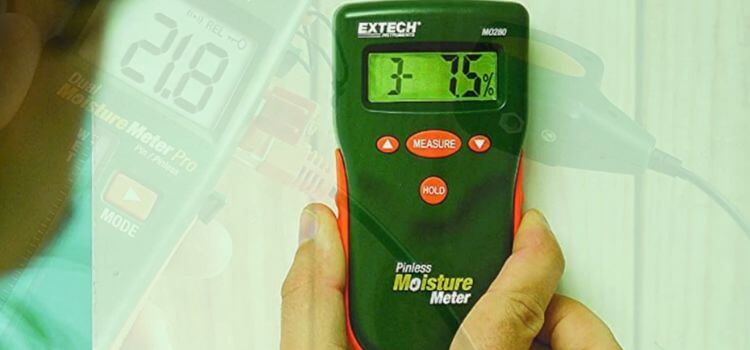When measuring the moisture content in various materials, two primary types of moisture meters are available in the market – pin and pinless. These types serve the same purpose but differ in their functionality and features.
In this article, we will dive deeper into understanding the differences between pin and pinless moisture meters, helping you choose the right one for your needs.
Pin Moisture Meter

A pin moisture meter is a device that uses two metal pins to measure the electrical resistance of a material. The pins are inserted into the material’s surface, and an electrical current is passed through them. The material’s resistance is then measured, indicating its moisture content. The higher the resistance, the lower the moisture content.
Advantages of Pin Moisture Meter
- Accurate readings: Pin moisture meters provide precise and reliable measurements, making them popular among professionals.
- Versatility: They can be used on various materials such as wood, drywall, concrete, etc.
- Affordable: Compared to pinless moisture meters, pin ones are more budget-friendly.
Disadvantages of Pin Moisture Meter
- Material damage: Inserting pins in the material can leave visible marks or holes, which may not be ideal for specific materials.
- Time-consuming: Inserting the pins and taking multiple readings can be time-consuming, especially when working on a large area.
Pinless Moisture Meter

A pinless moisture meter, also known as a non-invasive or non-destructive moisture meter, uses electromagnetic waves to measure the moisture content of a material. This type of meter does not require any pins to be inserted into the material, making it more convenient and less damaging.
Advantages of Pinless Moisture Meter
- Non-destructive: As mentioned earlier, pinless moisture meters do not require any holes or marks to be made on the material, making them an ideal choice for delicate materials.
- Quick readings: Compared to pin moisture meters, pinless ones provide faster readings as they don’t require inserting pins.
Disadvantages of Pinless Moisture Meter
- Less accurate: While pinless moisture meters are convenient, they may need to provide accurate readings on certain materials, such as very thin or dense ones.
- Limited to surface measurements: These meters only measure the moisture on the material’s surface and do not penetrate deeper layers like pin meters do.
Which Moisture Meter Is Easier to Use: Pin or Pinless?
The answer to this question depends on your preference and the material you are working with. Pin moisture meters require some skill in inserting the pins correctly, but once you get the hang of it, they are relatively easy to use.
On the other hand, pinless moisture meters are more user-friendly as they don’t require special skills or techniques.
In terms of convenience, both types have their pros and cons. A pinless moisture meter would be a better option if you are working with delicate materials or need quick surface readings. However, a pin moisture meter would be the ideal choice if accuracy is crucial.
Final Thoughts
Both pin and pinless moisture meters have their advantages and limitations. A pin moisture meter would be the ideal choice if you require precise and reliable readings. However, a pinless moisture meter would be more suitable if you are working with delicate materials or need quick surface measurements.
Ultimately, the choice depends on your specific needs and budget. We hope this comparison has helped you understand the differences between these two types of moisture meters and make an informed decision for your next project.